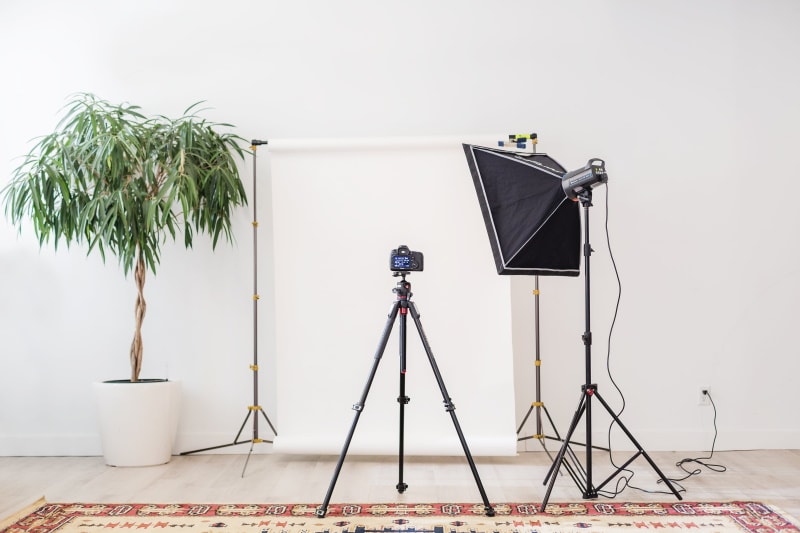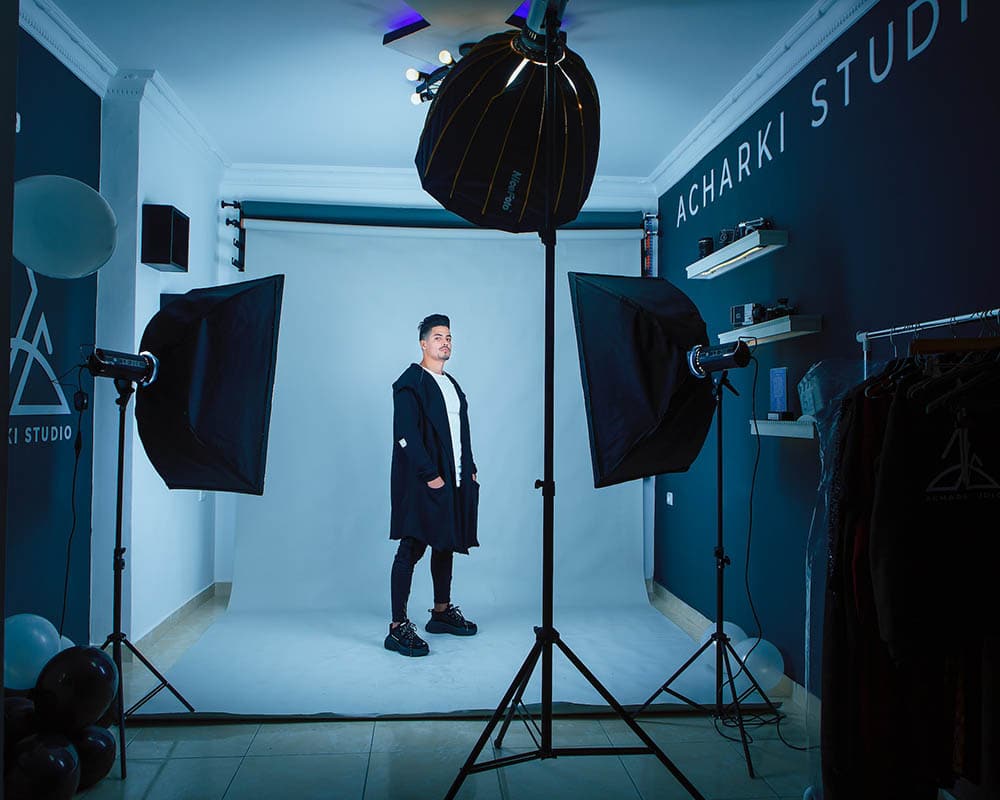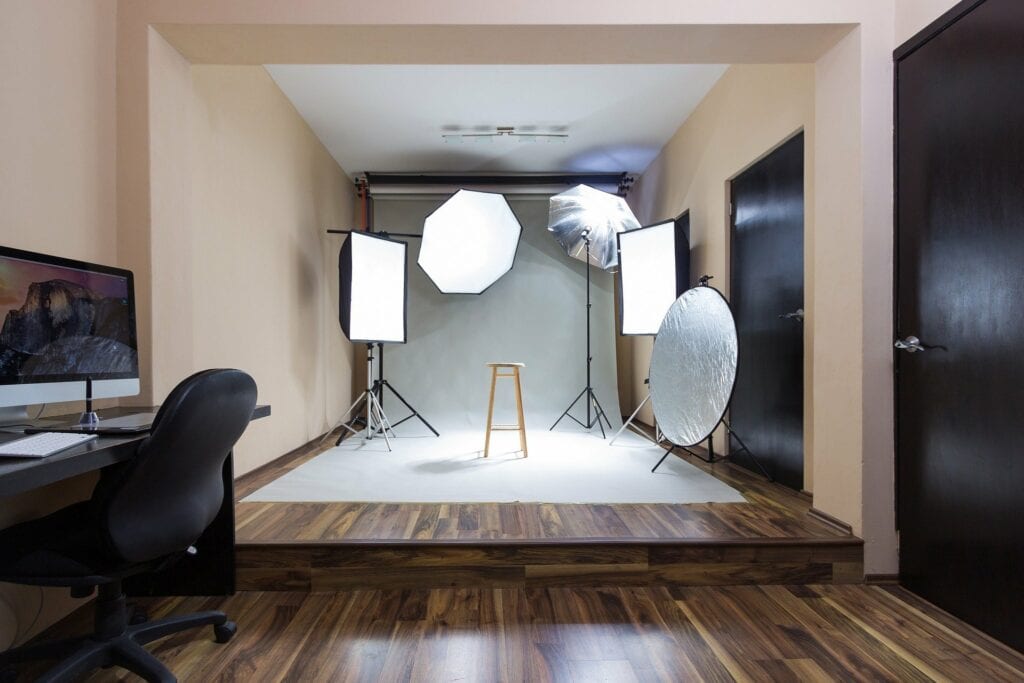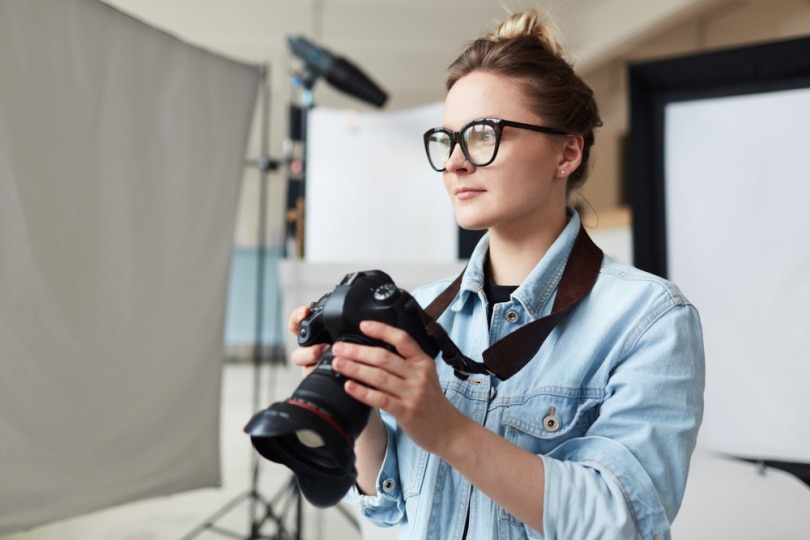What Is a Scrim? Photography Basics Explained
Last Updated on

If you’re eagerly educating yourself about photography and its terminology, you’ve likely heard of a scrim. It’s an important piece of gear used by professionals to control light, so you’ll want to keep reading if you want to develop this skill.
In this article, we’ll discuss what a scrim is, how it affects your light sources, how to use them, and in what scenarios it will benefit you. Look below to find out more!

How a Scrim Works
In basic terms, a scrim helps reduce harsh light against your subject. It’s a piece of fabric often attached to a stand or operated by another person and can have varying shapes and dimensions. Scrims can both reduce overall brightness or diffuse it by scattering the light.
To do this, photographers place a scrim on the side of the subject that has the most intense light, pointed towards the direction of the subject. This can be a huge help in creating proper exposures, as you can maintain the information of the highlights without blowing them out. Additionally, it can enable you to increase the exposure overall if the scrim doesn’t allow as much light to come through. In this case, you will get more details in the shadows with the same level of brightness as before.
When using a scrim outside, you may need to use sandbags or weighted objects to keep it sturdy. They are fabric, so they aren’t stable on their own unless you have a buddy to hold them in place or make adjustments hand-held while connected to a boom.

What Are the Different Types of Scrims? When Are They Used?
Scrims are made of several kinds of fabric, but they can also be translucent, netted, or opaque. Depending on the scenario, you may choose one over the other. There’s also a price difference if the scrim is made with high-end fabrics. There are a lot of instances where you may buy the scrim frame and stand (or boom) before purchasing the individual materials that go inside. This way, you can choose what you need for the type of work you do.
Plenty of scrims are also made of metal, as it’s sturdier and can reflect light well. For example, steel may be the metal of choice.
We’ll give you the scoop on a few types of scrims below.
Leno
Also known as a “filled” scrim, the Leno has a completely opaque surface. It is usually a shade of white or gray; however, the material can be prone to ripping, so it’s good to keep them stored in a safe place away from sharp objects. Due to its luminescent traits, the Leno scrim is great for making the colors in a scene pop. Leno scrims are commonly used for television shows but are awesome for outdoor shoots to control the sky.
Sharkstooth
Made from cotton, the sharkstooth scrim is perforated and appears translucent or transparent when a light is placed from behind. Not only can these be in neutral colors, but they also come in a blue variety. The strengths of the sharkstooth scrim revolve around its ability to reflect light in a large area. In most cases, only one of this type is used, as adding an additional sharkstooth introduces moiré. They can be implemented into most scenes, but not all.

Chameleon
The Chameleon is a diffusion scrim consisting of synthetic materials, unlike cotton or silk. Compared to other scrim types, they are able to accommodate a myriad of color variations. It’s designed to make a glow or gleam that flushes the environment or subject, and in many instances, multiple chameleon scrims will be set up to expose a single shot. Their main purpose is to create an atmosphere in moody situations as a special effect. For example, if the film or photo is showing a memory of the past.
Bobbinette
Bobbinette scrims are perforated and made of cotton. The hexagonal threading design allows for more light to come through, as it can appear transparent if backlit. White and gray are the primary colors you’ll see in a bobbinette scrim, and they are fairly easy to carry around. However, they are prone to damage similar to the Leno. Best used for cut drops.
Advantages of Scrims
The biggest reason you’ll want to get a scrim is to control and manipulate specific lighting scenarios. Artificial lights by themselves will not be appropriate for many situations as they can be too bright. With scrims, you can diffuse or decrease the light and have a more balanced result than with no equipment at all. They play a vital role in getting both indoor and outdoor shots.
Small-scale scrims are not very big and will be easy to transport. In any case, having one will give you the upper hand as they make photographs look more professional. Along with that, they don’t cost a huge amount of money, so they are usually worth the investment.

Disadvantages of Scrims
Many photographers do not bother with them because they take time to set up, and usually require sandbags or even another person to stand on them if used outdoors. If you’ve ever carried around sandbags, you know it isn’t a walk in the park. This is because the surface area makes them a target for the wind to pick them up due to their lightweight nature (even metal scrims!).
Also, the size of scrims varies widely. Some may cover an entire stage or scene, so they can also be difficult to carry around. Another hassle you may face is that scrims take some time and effort to set up, which isn’t always a bad thing. However, this can cut into your golden-hour or blue-hour periods if you’re taking shots at that time.

Frequently Asked Questions
How Do You Make a Photography Scrim?
If you didn’t know this already, you can actually save some money and build your own scrim by hand. All you need are a few tools, the material of your choice, and some DIY enthusiasm to get started. We recommend you check out this article to craft one yourself!
How Many Stops Is a Scrim?
There isn’t a clear-cut answer to how many stops of light a scrim will decrease your exposure. It all depends on which type of scrim you’re dealing with, as well as the colors used for the material. A scrim may lower half of a stop of light or it may lower a single stop. Again, it just depends on the variables.
However, there are a couple of standards that scrims may follow, as they may come in the form of a “single” or “double”. A single may cut half of a stop, whereas a double usually cuts a single stop.

How Are Scrims Color Coded?
If you’ve ever seen a scrim in use, you may have noticed that there are colored frames; red and green. As we noted in the above section, they are commonly divided into single or double categories. A green-framed scrim indicates a single, whereas a red-framed scrim is indicative of a double.

Conclusion
If you want to up your photography game, it’s essential that you consider picking up a scrim to help maintain your lighting and create depth in your scenes. Often, you can’t rely on natural lighting to expose for shots, so this could be the next big step forward for you. All that said, we do hope this gave you some valuable insight into scrims, so you aren’t puzzled if your friends or colleagues mention it!
Featured Image Credit: Piqsels
About the Author Robert Sparks
Robert’s obsession with all things optical started early in life, when his optician father would bring home prototypes for Robert to play with. Nowadays, Robert is dedicated to helping others find the right optics for their needs. His hobbies include astronomy, astrophysics, and model building. Originally from Newark, NJ, he resides in Santa Fe, New Mexico, where the nighttime skies are filled with glittering stars.
Related Articles:
What Is the Best Binocular Magnification for Hunting? Optical Features Explained
How to Clean a Refractor Telescope: Step-by-Step Guide
How to Clean a Telescope Eyepiece: Step-by-Step Guide
How to Clean a Rifle Scope: 8 Expert Tips
Monocular vs Telescope: Differences Explained (With Pictures)
What Is a Monocular Used For? 8 Common Functions
How to Clean a Telescope Mirror: 8 Expert Tips
Brightfield vs Phase Contrast Microscopy: The Differences Explained
